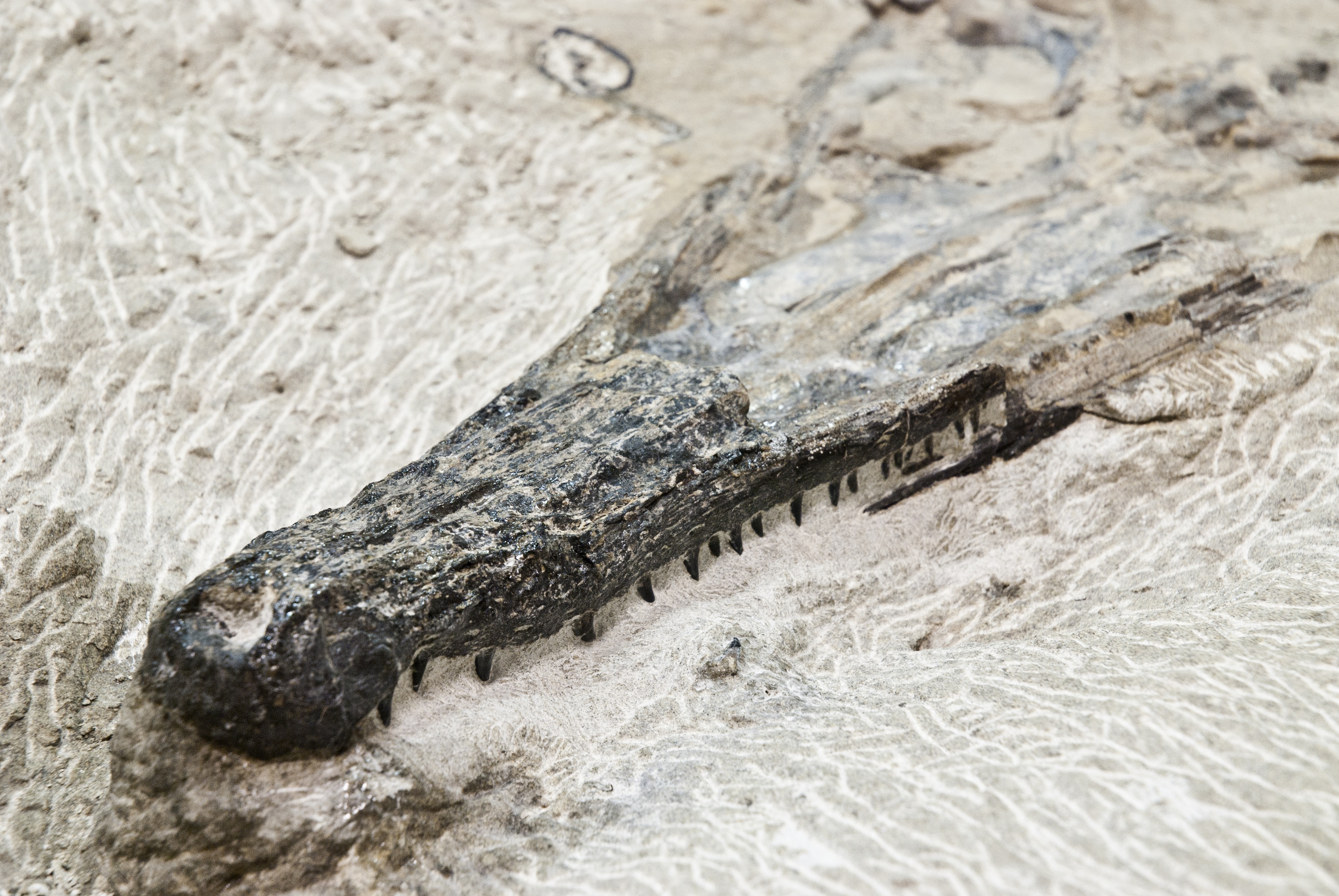An Olds College employee recently discovered an exceptionally well-preserved champsosaur fossil.
Champsosaurs were semi- aquatic fresh water reptiles that resembled a small crocodile, measuring about two metres in length. They lived 120 – 55 million years ago – this specimen is from the Paleocene, about 60 million years ago.
The fossil was encased in rock that was moved during a campus landscaping project. Leona Megli, grounds technician at Olds College found the specimen in a remote rock bed under some debris.
“We were looking at the rocks to see which one we would like best for a bed that we were building. I looked down at my feet and saw the fossil,” she said. “At first, I thought it surely can’t be a fossil. At first glance we thought it was a dried banana peel. At closer glance we realized it was something much more valuable, but the last thing you think you’d find in your job is a 60-million-year-old fossil.”
Upon discovery, the College emailed a photo to the Royal Tyrrell Museum and a senior technician went to investigate.
The fossil is currently in the preparation lab at the Royal Tyrrell Museum as a priority specimen. So far, technicians have uncovered the snout of the fossil.
“This is an exciting find,” said Dr. Donald Brinkman, director of preservation and research at the Royal Tyrrell Museum. “Two kinds of champsosaurs lived during the Palaeocene Epoch in North America—Champsosaurus and Simoedosaurus. Only two specimens of Simoedosaurus have been reported previously in North America – one from Saskatchewan and one from North Dakota. This specimen discovered in Olds is the rare Simoedosaurus.”
Outside North America, Simoedosaurus fossils have been found in Europe, so finding its remains in North America adds to evidence for an interchange at some point between the two continents.
“They also hope to find the rest of the fossil on campus. The sandstone rock that it was in was huge – about seven by five feet, but the fossil was broken just under the collarbone,” said Megli. “But it’s still really an exciting find.”
efawcett@reddeerexpress.com



